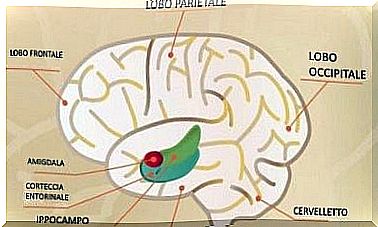EDTP: Transversal Approach To The Treatment Of Emotional Disorders

The cases of emotional disorders affecting children are increasing every day, especially anxiety, with a prevalence of up to 15%. With the Emotion Detectives Treatment Protocol , or EDTP, it is possible to teach children and adolescents to manage emotions and critical situations of daily life.
The hectic pace of life, school pressure, parental stress and genetic predisposition to emotional disorders are some of the factors that lead the child to suffer from psychological problems. There are currently several therapies available.
In recent times, great attention has been paid to a transversal approach. The assumption is that many of these disorders share a common core. Of this type, and aimed at adult patients, we can recall Norton’s Transdiagnostic Treatment or Barlow’s Unified Protocol.
Both programs identify the factors common to the various emotional pathologies (anxiety, depression, somatomorphic disorders, etc). The aim is to deal with them in a synergistic way with the most effective techniques and strategies. It is an expanding practice in child psychology, with proven programs such as EDTP.

Characteristics of EDTP (transversal protocol for the management of emotions)
Jill Ehrenreich, a psychologist at the University of Miami and director of the Child and Adolescent Mood and Anxiety Treatment Program, has successfully developed and tested a new cross-sectional program for the treatment of childhood emotional disorders. This is the EDTP.
It starts from the principle that the line that separates the different childhood disorders is very thin. As it happens in the adult world, in fact, it is very common that anxiety and depression are concomitant disorders.
The main objective of the intervention is to identify the patient’s weak points; also draw up a plan so that these are not an obstacle to solving problems. The new program is based mainly on cognitive techniques, but also on behavioral strategies. The points on which it rests are:
- Educating to emotions. Learn to identify them and recognize the role they play.
- Management of emotions. Learn the relationship between thought, emotion and behavior. Understanding that intervening on one of the three aspects affects the others.
- Ability to solve problems. Acquisition of the problem-solving technique of D’Zurilla and Goldfried, but applied to children.
- Correct assessment of situations. Knowing how to identify when the situation is positive, neutral or negative.
- Parent training. Sometimes childhood problems are favored by the attitude in the family, especially through negative reinforcement. The role assigned to parents in controlling this variable is therefore essential.
- Behavior activation. It is a classic strategy used in the treatment of depression. The aim is to increase the person’s positive reinforcements in their environment.

Study development
To carry out this study, the researchers worked with twenty-two children between the ages of 7 and 12. All of the children had a primary diagnosis of anxiety disorder and a secondary problem of depression.
Once a week, the children participated in group EDTP therapy, for a total of 15 weeks. The results indicated that, of the eighteen children who completed the program, fourteen no longer met the requirements for anxiety disorders. Furthermore, only 1 in 5 children with depressive disorder maintained it after the program.
One of the most striking results was the improvement in depression comorbid with anxiety. It is typical for depression, when combined with another emotional disorder, to slow down or make treatment difficult. This is a deeply felt problem, since current therapies are not designed to treat several emotional problems together.
The hypothesis of the researchers, based on the findings of Peter Norton, was that if the main disorder is approached in a broader perspective, including strategies aimed at depression, it also improves the latter. The solution, as Norton points out, is to find the underlying core of all disturbances and reject the “artificial distinctions”.









